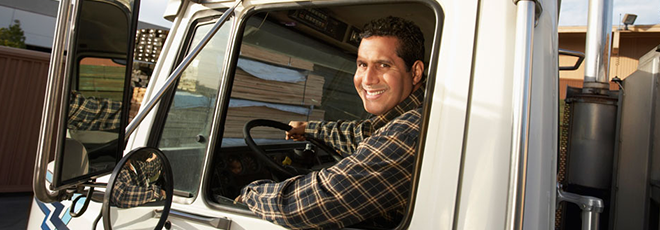There is a good reason why many fleets have turned to family farms in the search for future truck drivers. Those who grow up in these surroundings are obviously familiar with heavy equipment, know how to work independently, and often anxious to explore life beyond the fields.
But while family farms might continue to be a valuable source of potential employees, there is no mistaking the fact that this pool of workers continues to shrink. Only one in 46 Canadians now lives on a farm, according to Statistics Canada. Compare this to the one in three who lived there in 1931.
It is hardly the only recruiting challenge for a modern trucking industry. As the shortage of qualified drivers intensifies, fleets also need to find job candidates who can manage information, electronic tools and the stresses of Just in Time delivery schedules.
But progressive carriers have been answering these challenges by expanding their searches and reaching out to under-represented demographic groups.
A number of tradespeople offer a perfect example of those who could be a perfect fit for careers in trucking. Carpenters and electricians are often attracted to jobs where they can work independently, and those in the construction industry might also be very familiar with heavy equipment. These candidates may not be ready to abandon their existing careers altogether, but carriers are often able to hire people who are looking for work during another industry’s seasonal downturns.
Of course, there are still some risks when reaching out to people who work in other businesses. Many of the laid-off automotive workers who accepted trucking jobs during the recent economic downturn simply returned to their jobs on the assembly line as the economy recovered. Those who want to retain employees with these backgrounds might need to re-examine everything from their schedules to career paths.
But there are some distinct advantages to reaching out to different demographic groups. Younger workers, for example, tend to be very comfortable with electronic tools and communication systems. That means they are quicker to embrace new technology used to generate bills of lading, communications equipment, or Electronic on Board Recorders.
These skills are so valuable that some fleets are even exploring different routes and schedules to attract and retain their younger workers who place a high value on their personal time.
A long list of cultural groups is also earning some well-deserved attention. Fleets in Southwestern Ontario have certainly been able to attract many drivers from Poland and Russia, and several communities such as Vancouver, BC and Brampton, Ontario are recruiting a growing number of employees from regions such as Asia and the Middle East.
Existing workers from any cultural group can be a great resource when trying to reach out to people in their respective communities. Some fleets even offer their multicultural ambassadors a signing bonus for attracting new drivers who stay on the job for a specific period of time.
The companies that actually extend their recruiting efforts to other countries have discovered another benefit: The successful job candidates who are prepared to move to another part of the world will obviously be dedicated to their new jobs.
Fleets that have been successful in retaining these workers usually take steps to address a few unique needs. Someone who is recruited from another country, for example, might need some help to improve their language skills or even adjust to life in Canada. Those who leave their families and friends behind in the search for a new career may also need support from other resources in their cultural communities.
The under-represented groups are not limited to different cultures and business backgrounds, either. Women, for example, are largely absent from the world of truck drivers.
Companies have been able to reach out to more female job candidates by investing in equipment like automatic transmissions which reduce some of the job’s traditional physical demands. Revised schedules and local routes have made a difference of their own, particularly among those who have young families at home.
Regardless of the demographic group that a recruiter might explore, it’s the targeted retention efforts that can help to keep these new hires behind the wheel. Trained mentors and coaches will be better equipped to understand and address any group’s unique needs, and help anyone prepare for life on the road.
The added focus may involve some new thinking, but it will give any fleet a competitive edge in the search for the industry’s next generation of drivers.




